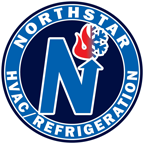Signs It’s Time to Replace Your Chiller: How to Know When to Upgrade
Written by Ed Rice
Chillers are a cornerstone of many commercial and industrial operations, responsible for providing efficient cooling to processes, equipment, and spaces. However, like all mechanical systems, chillers have a finite lifespan and knowing when to replace your unit can save you significant money, time, and headaches. Waiting too long can lead to higher energy bills, frequent breakdowns, and reduced efficiency, while upgrading at the right time ensures reliable operation and long-term savings.
In this blog post, we’ll explore key signs that indicate it might be time to replace your chiller and why investing in a new unit can benefit your business.
1. The Age of the Unit
Most chillers are designed to last between 15-20 years with regular maintenance. Over time, wear and tear, as well as the accumulation of scale and debris, can reduce the efficiency and durability of the system. Common issues with aging chillers include:
Outdated or unsupported controls.
Internal evaporator or condenser leaks.
Compressor failures.
Even with proper maintenance, older chillers may no longer meet modern efficiency or performance standards, impacting your operations. If your chiller is approaching the 15-year mark, it’s wise to assess its condition and consider upgrading to avoid unexpected failures.
2. Rising Maintenance Costs
As chillers age, components such as motors, fans, and compressors require more frequent repairs. These maintenance costs can quickly add up, particularly if replacement parts are difficult to source (more on that later).
Older chillers also require more energy to achieve the same cooling output, further straining their components. Over time, you may find that the cost of maintaining an aging chiller exceeds the cost of replacing it with a newer, more efficient model.
3. Higher Energy Bills
Energy efficiency is a major factor when evaluating whether to replace your chiller. Modern chillers are designed with advanced technologies that significantly reduce energy consumption compared to older models. For example, newer chillers often have a Coefficient of Performance (COP) above 6.0, while chillers over 25 years old may only achieve a COP of 3.5.
The result? Upgrading to a new chiller can slash energy costs by thousands of dollars annually. These savings alone often justify the investment, paying off the cost of the new system over its lifetime while reducing your carbon footprint.
4. Hard-to-Find Replacement Parts
If you’re finding it increasingly difficult to source replacement parts for your chiller, it may be time to consider a replacement. Manufacturers often phase out older chiller components, making it harder—and more expensive—to keep aging systems operational.
When downtime caused by waiting for parts disrupts your operations, the cost of lost productivity can far exceed the cost of a new chiller. Upgrading ensures you have access to readily available parts and modern support systems.
5. Operational Challenges and Complexity
Older chillers often lack the intuitive controls and advanced functionality found in modern systems. If your chiller is difficult to operate, it can create inefficiencies, frustrate employees, and lead to increased operating costs.
Newer chillers are equipped with smart controls, automated diagnostics, and remote monitoring capabilities, making them easier to manage and maintain. These features not only improve the user experience but also allow for more precise temperature control and energy optimization.
Benefits of Upgrading Your Chiller
Investing in a modern chiller brings a host of benefits that go beyond immediate cost savings:
Energy Efficiency: New chillers consume less energy, reducing operating costs and environmental impact.
Reliability: Modern units are designed for long-lasting performance, minimizing downtime and costly repairs.
Advanced Features: Smart technologies and improved controls enhance operational ease and flexibility.
Compliance: Many newer models meet or exceed updated environmental regulations, helping your business stay compliant with refrigerant and energy-efficiency standards.
Better Cooling Performance: Improved technology ensures more consistent and precise temperature control, boosting the quality of your operations.
How Northstar Refrigeration Can Help
At Northstar Refrigeration, we understand that replacing a chiller is a significant decision. That’s why our team of experts is here to guide you through the process, from assessing your current system to selecting the right energy-efficient chiller for your needs. We specialize in:
System Assessments: Determine whether repair or replacement is the best option for your system.
Custom Solutions: Design and install chillers tailored to your specific applications.
Ongoing Support: Provide maintenance and service plans to keep your new system running at peak performance.
Don’t wait until your chiller fails to take action. Contact us today at (508) 888-3692 to schedule a consultation and explore the benefits of upgrading to a modern, efficient chiller.
(508) 888-3692
www.northstarhvacr.com
Edward Rice
Director of Marketing,
Northstar Refrigeration, Inc.
95 Camelot Drive, Unit 1,
Plymouth, MA 02360
erice@northstarhvacr.com www.northstarhvacr.com
p: (508) 888-3692 x115
m: (508) 561-8638



